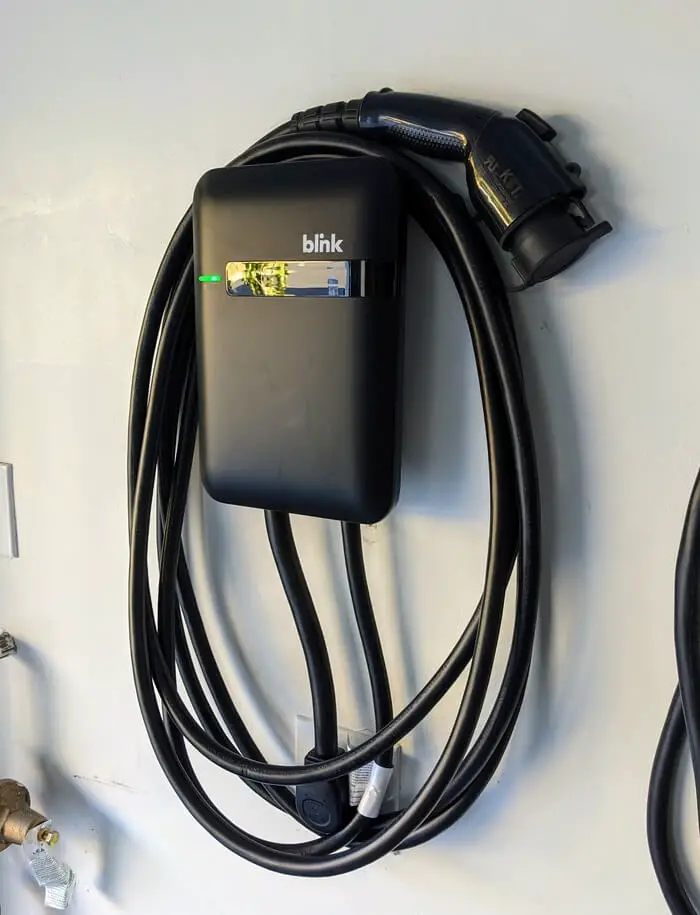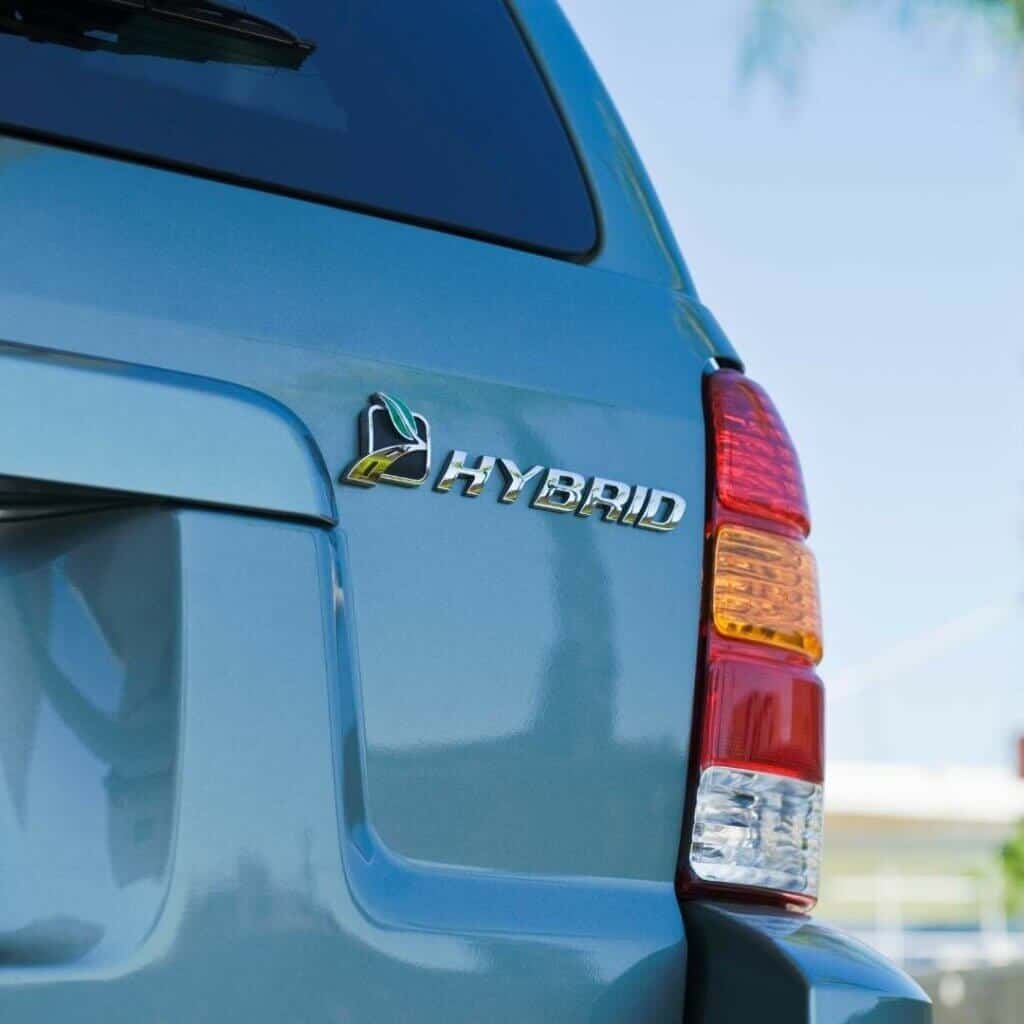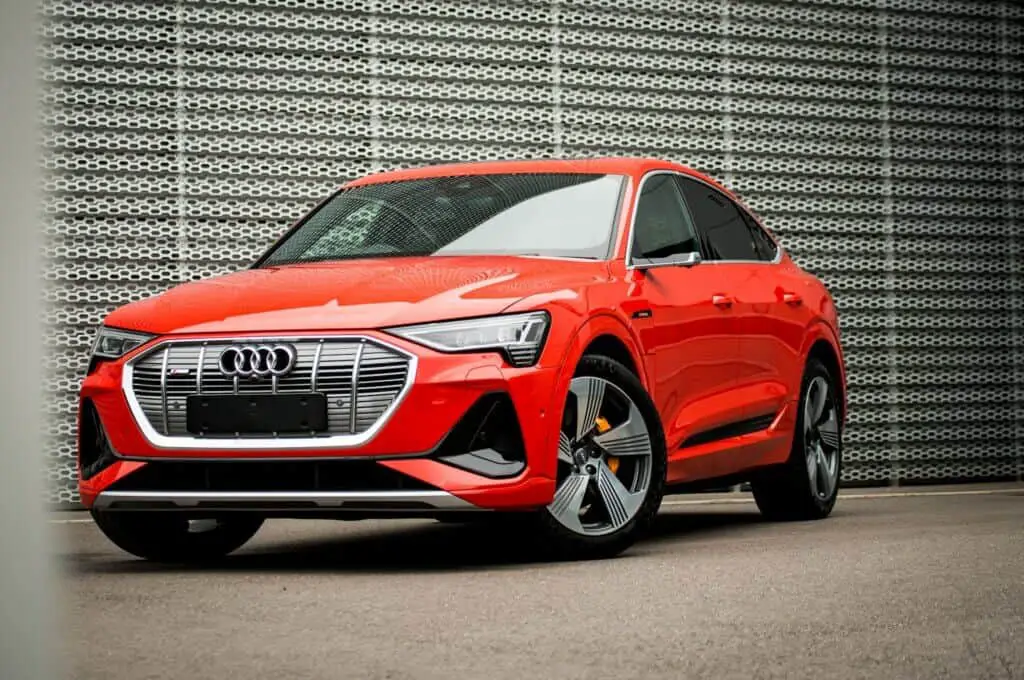Blink vs ChargePoint – Which EV charger is better?
ChargePoint and Blink Charging are some of the well-known brands in EV infrastructure and public charging stations. They offer Level 2 charging which can charge all EVs, including Teslas. A Level 2 charging station can charge your electric vehicle up to four times faster than the Level 1 charger that came standard with your vehicle.
This means that you won’t need to charge at public charging ports because the same service is available in the comfort and safety of your own home.
In this article, we will compare ChargePoint and Blink home chargers in detail to help you in making an informed choice between the two brands.
ChargePoint Review
ChargePoint is one of the top manufacturers of Electric vehicles chargers. It has several network of stations established throughout many countries. The ChargePoint Home Flex Level 2 AC charger has a superior track record compared to most alternative EV chargers available today. It leads the industry with 50 amps of AC and enables quick charging of even the most sophisticated electric vehicles.
The charging cable is 23 feet long, and can carry upto 12 kW of power. Any EV, including Tesla and Polestar vehicles, which have a different charge port but include an adaptor, can be charged with it, thanks to its SAE J1772 connector [2].
The ChargePoint comes with Wi-Fi and the ChargePoint mobile app. The app allows you to monitor how well your car is charging. It delivers comprehensive charging statistics while charging your car at home, work, or at a public charging station.
Several EV manufacturers have also integrated ChargePoint’s database into their connected car applications. Therefore, you no longer need to download and operate two separate apps for the vehicle and charger.
The app allows for planning of charging periods and charging at less expensive times of day. You can also utilize Amazon Alexa voice commands to operate the charger.
Blink Review
Blink [3] has endeavored to build a charging infrastructure necessary to satisfy the expanding needs of EV drivers. This has been made possible through their industry-leading technology and a wide network of public charging stations.
Blink offers the most cutting-edge technology available with its wide range of products. Blink charging comes in the HQ150 and HQ200 brands.
Only a NEMA 6-50 plug option is available for the Blink HQ150 [4].
This charger is fully water resistent so it’s great for outdoor use. It also features a standard SAE J1772 connector and can charge any EV.
The HQ150 has a square, rounded matte black design that is svelte and portable. The charging cable is 25 feet long and includes a cable pouch for storing the cord when not in use.
It has a 15.7-pound weight. It sells for a lot less money, because it is a very basic charger without any smart capabilities.
The HQ200 [6] is a new household EV charger by Blink. This charger has adjustable amperage settings ranging from 12A to 50A and comes with a NEMA 14-50 plug. It can be installed indoors or outdoors and is rated NEMA 3R. Standard SAE J1772 connector is compatible any EV.
In comparison to the HQ150, the HQ200 has a smaller, more portable design and a more neutral color palette. Your can see the charge status on LED lights. It has a 23-foot charging cable and includes a pouch to store the charging wire when not in use.
Comparing Blink vs ChargePoint

- Price
The question of which EV charging provider is less expensive is difficult to answer. This is because the cost of charging varies from state to state and even from one charging station to the next.
Blink estimates that it will cost between $25 and $50 to fully charge a 65-kilowatt battery, or between $0.39 and $0.79 per kWh [7].
Although the charges for ChargePoint are established by the station owner, you may anticipate that they will fall within the same range, with higher rates for DC fast charging than for Level 2 charging.
Both networks provide benefits if you sign up for a free membership. You can start charging by tapping your membership card (or smartphone app). Blink also provides “Plus” and “Pro” subscriptions with prepaid options.
You should be aware that only a few jurisdictions permit networks to bill by kilowatt-hours, which is typically more economical. In other states, the pay is rated pre-interview. It is also worth noting that charging your EV at home will nearly always be less expensive.
- Locations
There is no denying that ChargePoint has the larger network in terms of locations. It has more than 100,000 spots just in North America, with more EV charging stations throughout Europe. Contrarily, Blink only has about 30,000 stations, some of which are in the Caribbean and Central America.
Both companies offer comparable coverage in several regions, like the East and West Coasts. However, if you intend to travel in your electric car, you should look at a map of EV charging stations [8] before you leave your house.
ChargePoint’s stations are more uniformly spaced out across the nation while Blink’s network includes gaps in areas like North and South Dakota and Montana. Both businesses provide roaming services that let you use your membership card to utilize another charge operator’s services. However, these services could be more expensive.
- Compatibility
There is no universal charger that is compatible with all vehicle models. While other EVs employ CCS or CHAdeMO connection types, Teslas use the SAE J1772 connector. Fortunately, ChargePoint and Blink make it simple to learn what kind of connections are offered at each place.
You will need to download the corresponding smartphone apps for real-time availability checks and station reservations. Most EV models can easily charge on any network. However, Tesla owners will need to pack an adapter or use a Supercharger station instead.
- Smart Features
The ChargePoint Home Flex and the Blink EV chargers are distinct from one another due to their various smart features. The Blink HQ150 is a straightforward charger for EV drivers who just need to charge their cars without any smart features. It is not Wi-Fi or Bluetooth enabled, nor does it have an app. It is the less expensive choice as a result.
The ChargePoint Home Flex, on the other hand, provides smart features like Wi-Fi, Bluetooth (16A), compatibility with Amazon Alexa, and Apple Siri. With the help of the ChargePoint app, you can schedule charging for times when electricity costs are lowest, create reminders, and monitor energy use [9].
Also, charging can be remotely started or stopped.
Similar intelligent functions are available on the HQ200 and can be accessed via the Blink smartphone app [10]. You can set remote charging times to benefit from lower electricity prices. It also supports Apple Siri, Google Home, or Amazon Alexa.
The price point is the primary distinction between the ChargePoint Home Flex and the Blink HQ200. Unlike the ChargePoint, the Blink charger supports Google Home. The Blink HQ200 has load-sharing functionality while the ChargePoint Home Flex does not.
Using load-sharing technology, you can distribute energy among chargers so that numerous EVs can be charged on a single circuit. This allows you to manage EV chargers at both personal and public charging stations inside the networks of both apps.
Related: Juicebox vs ChargePoint
Conclusion
The ChargePoint Home Flex and Blink are both excellent charging options. Both are effective at charging an EV, particularly if you intend to charge it overnight. Your preferences as an EV driver will determine which one is preferable for you.
The Blink HQ150 is the best option if you only want to charge your electric car without any other bells and whistles. The ChargePoint Home Flex is the superior choice if you’re looking for a smart charger that can, start and end a charging session, and let you charge your car when electricity prices are lowest, among others.
Choosing a charger ultimately comes down to making sure it meets your specific needs and tastes. You’ll be much better off relying on a Level 1 charger or using public charging stations than any home EV charger, regardless of which one you pick.
Read Next: Nissan Note e-Power Problems




